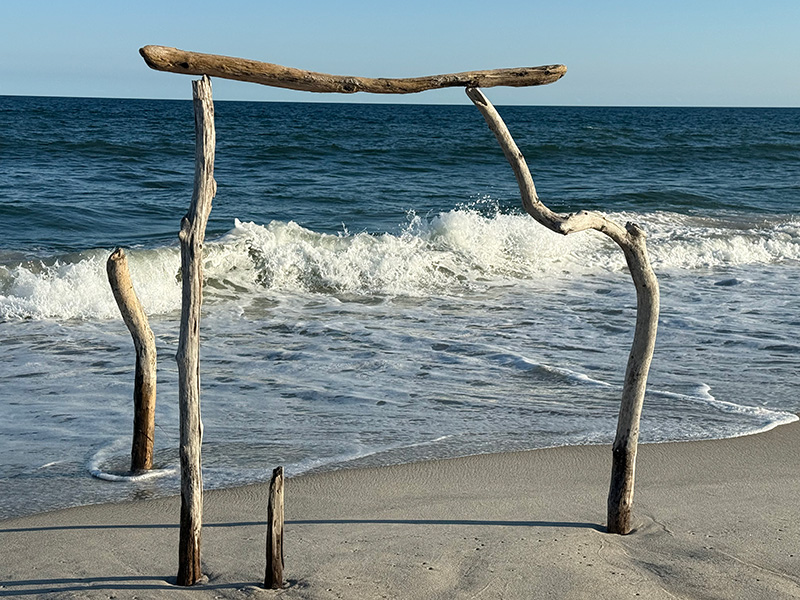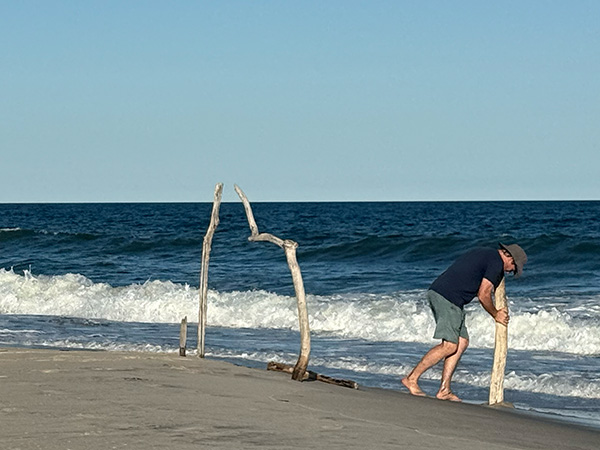Ephemeral Art and the Creative Process
The sculpture didn’t have to exist for more than those few moments to have been the subject of a complete creative process, nor did our enjoyment of it as audience diminish because we knew it wouldn’t last. On the contrary, the temporary nature of it added to the experience – art and audience existing in the same space only fleetingly before the moment passed – and all that remains is our memory of it (and the photos Jen took). Not unlike theater or other performance art, some physical art is created to exist for a short period of time. Some artists even prefer to work in the medium of the temporary, using materials that degrade or disappear altogether. The Vegetable Orchestra, for example, creates new instruments for every performance from fresh vegetables, which can only be used once. The artist Andy Goldsworthy is renowned for his elaborate and beautiful works from materials found in nature, such as leaves, sticks, and ice, which degrade over time.
Temporary Art on a Grand Scale
In fact, I just attended a large annual art festival where most of the work displayed only exists for the duration of the event itself. Tens of thousands of artists and performers converge and build art installations in place. Then the artists become the audience of each other’s art while the festival continues. The art is not there to be sold. Instead, it is there to be interacted with and enjoyed in the moment. At the end of the event, all the art is dismantled or destroyed, never to exist in that space and time again. As an attendee, it makes the experience of that art very special, and I found I spent time with it in a different way than if I understood it to be a permanent installation.
The Creative Process in Everyday Life
As with art, not everything you create in your life has to have a permanent outcome, nor does it have to have some deep-seated meaning. Your life is yours to live as you see fit, and sometimes you may just want to create a specific experience for yourself, like a particular hike in the woods or dinner with friends. There are no rules around what you decide to create, how long it lasts, or even the level of meaning to you. To engage in the creative process, you need to have a clear idea of what you want to create, along with an understanding of your starting point, which creates structural tension that resolves as you take actions to make it happen.
Building Momentum
Every time you complete the process, it can build momentum for more creations. That’s one reason why we include Daily Creations as part of the Creating Your Life course: small creations you do every day that don’t need to serve any purpose except to exist, however long they might last.
© 2025 Ivan Fritz | Photos: Jennifer Thornton

